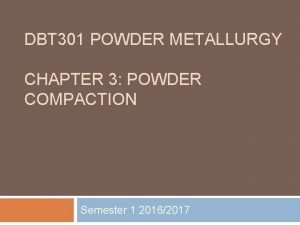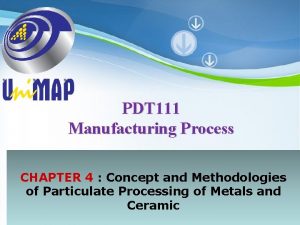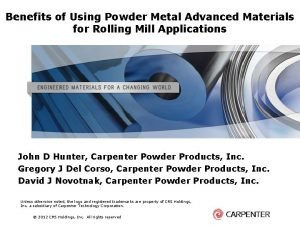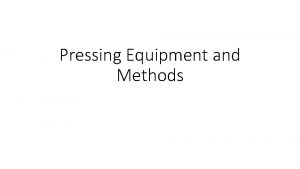Explain How Pressing Equipment Operating Surface are Kept








- Slides: 8

"Explain How Pressing Equipment & Operating Surface are Kept Free of Contamination & Give Examples on How to Maintain the Equipment"

Avoiding Contamination • Use a pressing cloth whenever dealing with fusible interfacings or wax, to prevent any residue getting onto the iron or operating surface. • Always follow the fabric care instructions to prevent burning the fabric. • Allow the iron to heat up properly before attempting to use. • Clean your iron every year to remove any build up of limescale.

Avoiding Contamination - Pressing Cloths • Check which type of press cloth gives the best result. Polyester content will melt, muslin makes a and organza pressing cloth is ideal. Pre wash it to avoid any colour run. Be sure to wash your cloth first to remove any sizing you can either lightly dampen your pressing cloth, or use it dry. Its fine to wash both silk and man-made organza in the washing machine • Wash the organza material at a warm temperature in your washing machine. Put the fabric in the dryer on a “tumble dry” setting. Add a dryer sheet to eliminate static electricity. Take the fabric out of the dryer as soon as it's dry. Iron the organza on a low heat setting to remove any wrinkle use a mild detergent, but nothing containing bleach

Vaccum Board & Teflon Plates • The flimsy foam that comes with an ironing board is inadequate, replace it with layers of wool fabric or cotton padding (an old mattress pad may be a suggestion), generally you need ½ inch. Teflon coated ironing board reflects too much heat and may cause bubbling when you fuse interfacing. Plain sturdy cotton muslin or duck is best. • You can buy various standard, disposable, or heavy duty iron shoe made from silicone, fibre glass and Teflon coat. Most fit most irons, some are standardized and it has to have PTFE. (Quality varies therefore costs vary).

General Maintenance – Helpful Tips • Before you start pressing for the day with a boiler iron, you have to bleed off any air that may be in the tank, if you forget to do that, your first pass will be a big wet spot • Check required water level and use a dipstick to check amount of water in it. You can’t add water mid process like you can with a home iron. You have to turn it off, wait a bit and release the pressure to add water. Do not add too much water it will cause it to spit. Always leave commercial iron on protective pad to protect iron and surface. • When using a steam iron, always empty the reservoir after each session, to reduce the limescale grime and build up.

Maintenance – DIY • To make the iron run smoother: while on a high setting, run over waxed paper • To remove wax from the iron plate: while on a high setting, run over newspaper • Use a damp cloth while the iron is warm, rub over the surface to remove any gunk (I. e. interfacing, wax) • Stubborn stains: use a little mild detergent and a nylon mesh pad and rub over the iron plate. • To remove melted plastic: sprinkle salt on foil and iron over it, this will loosen the plastic • To remove burnt fabric: place a wet sponge on the affected area, the sudden change in temperature will help peel off the burnt fabric from the iron

Maintenance – DIY • To remove grime and limescale in the inside of the iron: fill the iron with ¼ vinegar and ¾ water, turn the iron on and use the steam for 5 -10 minutes. Empty and refill with just water and use the steam again to flush out any remaining vinegar. • To remove rust: use a mixture of 2 teaspoons of baking soda with a little water and rub on the affected area. Wipe off with a damp cloth. • To clean a dirty iron plate: while the iron is on a high setting with no steam, put salt on a damp cloth and rub over the iron plate, the dirt will stick to the salt. • Dryer Sheets: Turn the setting of the iron on low and rub a few dryer sheets over the bottom of your iron until you remove the accumulated dirt and grime. Finally iron, on a clean rag to remove any traces of residue from the dryer sheets. • Scrub off the gunk from the iron’s sole plate with a little white toothpaste (not gel).

Maintenance – In the Market • Prym/Kilrock Stick Iron Cleaner – to remove stains/burn marks/sitcky residue on the iron • Appliance Descaler Sachets – to clean the inside of iron & remove limescale • Faultless Hot Iron Cleaner Cream – removes residue off the iron plate, safe for teflon














